This blog takes a usual Christmas break and returns mid January 2020. We would like to wish all of our readers a happy Christmas and prosperous new year.
|
By David Butler
This blog takes a usual Christmas break and returns mid January 2020. We would like to wish all of our readers a happy Christmas and prosperous new year. By John Considine Between 2000 and 2019 there were 645 individuals who's name has appeared once next to a contribution to the Journal of Sports Economics. One of them is from this parish (Robbie Butler). Others have contributed more often as is illustrated in the picture below. One hundred and twenty nine have contributed two pieces. The names of 43 individuals have appeared three times. And so on.
At the upper end of the distribution are names like Berri, Coates, Fort, Humphreys, Krautmann, Lee, Paul, and Simmons. We here in Cork are fortunate that half of these leaders in the field have visited us. Their willingness to promote the field of sports economics by their visits is much appreciated. They have visited for the annual workshop - a workshop conceived, and driven, by Robbie Butler and run with the help of David Butler and John Eakins. (The bar chart includes all forms of contribution, e.g. articles, book reviews, comments, editorials, obituaries, research notes, and replies.) By Robbie Butler Casual fans of football might have been surprised to see a score line from the Quarter Final of the Carabao (league) Cup that read Aston Villa 5 - 0 Liverpool. The recently promoted team beat the European Champions comfortably to book their place in the last 4. What the score line doesn't tell you is that the average age of the Liverpool team was a little over 19. Probably more discrete, but equally telling, is that the sum of the squad numbers for Liverpool was just short of 1,300! That's an average of 72. The lowest number on the back of any Liverpool jersey at Villa Park was the "51" visible on the back of Ki-Jana Hoever. While the youngsters were battling against Villa the Liverpool first team was busy preparing in Qatar for the FIFA World Club Championship Semi-Final. Unfortunately for the Merseyside club, fixture congestion meant that the only way the club could compete in both competitions was to hold games within 24 hours of one another. There are many reasons why the club decided to priorities a trip to Qatar over Birmingham but probably the most obvious is the chasm in prizemoney available in both. The figures below provide sources of prizemoney for the 2019/20 season. Data for the Premier League is taken from 2018/1 as the variability in winnings are based on the number of appearances on television, as well as finishing position. On the left, all competitions that Liverpool will compete in are presented. The Premier League was the source of more than £150 million pounds in prize money last season. In 2019/20 success in the Champions League again would results in a windfall of around £70 million. The FA Cup could be worth almost £7 million in prizemoney.
While the FIFA World Club Championship is worth about half of the FA Cup (£3.75 million) it involves just two games. In fact, just showing up is worth in Qatar is worth £1.5 million to the Red. Compare this to winning the Carabao Cup. The figure to the right, takes a closer look at the FIFA World Club Championship and Carabao Cup, as the latter is too small to see on the left-hand graphic. At just £100,000 for the winners it is easy to see why Liverpool chose to head to the sun this week. By John Considine The Journal of Sports Economics has entered its 21st year. A review of the previous 20 years reveals some interesting changes. For example, in the year 2000, Volume 1 was published in four installments. In 2007, that became six installments. And in 2015, Volume 16 was published in eight installments. An impressive increase. I had a hunch that the number of authors appearing on each paper was increasing. I decided to check the numbers. The results are illustrated below. Maybe there is a slight increase. There seems to have been an increase from the early years but for the majority of the period the average number is around 2 authors per paper. Included in the calculation are articles and research notes. Editorials and Book Reviews are excluded. Comments/Replies were excluded (although one or two were hard to classify). The individual pieces were ordered in the sequence in which they were published and I took a moving average of 20 publications.
By David Butler Earlier this year I had entry on the Sheffield United model. This looked at their Championship squad and how it was drawn solely from the UK and Republic of Ireland talent pool. The interesting thing was that Sheffield United performed so well considering the estimated value of the players. They duly earned promotion to the Premier League. Since joining the elite, they have added three senior players that are registered with a non-UK/Irish international team to their ranks. Ravel Morrison, Lys Mousset and Michael Verrips. Only the latter two were born outside of the UK. At the start of the season bookmakers estimated that Sheffield United were odds on, and the most likely of all teams, to be relegated – they estimated that they had a circa 60% probability of relegation. How times have changed. Chris Wilder’s side currently have a circa 3% relegation chance. Excelling in the first half of the league upon promotion is not entirely rare however. How do Sheffield United compare to other promoted teams approaching the half way point in the season? The table below shows the performance of the top 20 promoted teams since the Premier League became a 20 team competition in 95/96. The average points of all promoted teams after 17 matches is 18 points. So Wilder is doing better than the average.
Sunderland’s 99/00 season tops the list for promoted clubs. At this stage they had 34 points – Kevin Phillip’s 30 goals that season meant that they finished 7th. Middlesbrough 95/96 season and Ipswitch Town 00/01 season comes in joint second. By Sean Ó'Conaill
News emerged yesterday from the Circuit Court of the Examinership process that Limerick FC were engaged in had failed to produce a positive outcome. The unfortunate result of this is that, most likely, Munster Football Club Limited which trades as Limerick FC will have a liquidator appointed and the holding company will eventually cease to exist as a company. Unfortunately, Irish football has a long and ongoing relationship with insolvency events over the years where a number of clubs have entered Examinership or have ultimately been liquidated. This is not a situation unique to Ireland with insolvency events a regular feature of football in most jurisdictions with Bury FC being a very prominent recent example in England. For football clubs, insolvency events generally fall into one of two separate but often interconnected categories. Liquidation is the legal process under the Companies Acts whereby a company is effectively killed off because it cannot continue as a going concern. In the case of football clubs, this means the holding company behind the football club (usually a limited liability company of one sort or another) is being liquidated. Examinership is the Irish legal process where a company is given some breathing space from its creditors for a set period, which can be extended, in order to try and get the company back on an even keel and to allow it to continue as a going concern. A very similar process to Examinership is known as Administration in the England and Wales and Chapter in the United States. For football clubs, the process involves the creditors of the football club taking a significant hit on the amount they are owed but crucially it allows the company to continue in existence, usually under new ownership. Most Football Associations apply strict criteria and some sporting sanction for having entered examinership due to the perception of an unfair advantage arising from it. In the 2019 League of Ireland season Limerick FC amassed 36 points on the field of play notionally placing them 6th in the First Division (2nd tier) league table. However, having entered Examinership, Limerick were deducted 26 points which meant their adjusted league position was 10th and last. Limerick FC entered into Examinership with a very experienced firm - Baker Tilly Chartered Accountants - taking the lead in the process. Unfortunately, yesterday’s developments demonstrate that Limerick FC and the Court Appointed Examiner were unable to secure the required investment and the holding company will now be liquidated. This, however, does not necessarily have to mean the end for everything that Limerick FC does. The Courts have no jurisdiction to liquidate a football club, they can only liquidate the holding company. The club itself is a separate entity that exists in the football sense, is a member of the Football Association of Ireland and affiliated to the League of Ireland and some local leagues around Limerick at certain age levels. The club and the holding company, although closely linked, are not the same thing. The most superficial look at the various holding companies behind every current League of Ireland member will show that most have had multiple holding companies over their entire existence as football clubs with the vast majority having experience some insolvency events over the years. Up until the arrival of Club Licensing this distinction made little difference. If the holding company behind a football club got into difficulty, the club would merely be spun off into a different company, and continue to compete as a club if the holding company behind it was liquidated, even if this occurred during the season (such as what happened to Cork City FC in 1996). Club licensing put a stop to these practices as it created a tighter link between the holding company and the licence required to compete at League of Ireland and UEFA level. Cork City FC and Derry City FC in 2010 are two interesting examples of the impact of these changes with both clubs starting the 2010 League of Ireland season in the First Division. Cork City FC, while maintaining the same membership of the FAI after they were awarded the licence to compete in the First Division, had to compete under the name Cork City FORAS Co-Op for the 2010 season until the intellectual property rights were acquired by FORAS from the liquidator of the previous holding company in mid-2010. Licences are now awarded to clubs who are members of the FAI, via their holding companies or legal entities. This ensures that clubs cannot simply preform a “phoenix trick” of running up debt and then running away from it to form a new holding company without any sanction. It does allow a certain degree of flexibility to the FAI. This means there is effectively no prospect of Limerick FC competing next season in the First Division of the League of Ireland, due to the costs and licensing implications for the holding company at senior league of Ireland level. In any event it appears as though no licence to compete in the men’s League of Ireland has been made by those behind the holding company pending the outcome of the examinership process. There might however be some prospect of entities like the Limerick FC Women’s team and perhaps some of the other connected teams being spun out, with the help of a liquidator and the FAI, to a separate entity allowing the club to continue to compete in the Women’s National League and perhaps at some underage grades for example. This could, potentially in time become a vehicle to resurrect senior men’s football in Limerick pending the settlement of the liquidation of the holding company. Dr Sean Ó'Conaill is a lecturer in the School of Law, University College Cork. Sean lectures sports law and is a Director of the Centre for Sports Economcis and Law (CSEL). By Robbie Butler
In February this year I addressed the issue of Irish horse racing moving from its long-time home of Attheraces (now Sky Sports Racing) to Racing TV. The piece discusses a number of challenges for the move, particularly Irish racing's place on the new channel. After nearly one year of the new provider, some of the obstacles remain. This week the Racing Post ran a article about television coverage of the Grade 1 John Durkan Chase at Punchestown on Sunday. In the piece, general manager of Punchestown racecourse and chairman of Horse Racing Ireland’s media rights committee Conor O’Neill, said he was “very disappointed” that the race was broadcast on a split screen on Racing TV and lacked commentary until the final number of furlongs. The race shared the screen, firstly with a race from Huntington, and then Cork. As the Peterborough Chase at Huntington started before the John Durkan it took commentary from the English track. Once this ended, Cork replaced the English course in the split screen, with commentary changing to the John Durkan Chase at Punchestown. Of course, this only happened because of a delay of more than 10 minutes to the race at Punchestown. The race was due to start at 1.50pm. Huntington started as planned at 1.55pm and Cork 2.05pm. Because the John Durkan Chase did not start until just after 2pm, it was sandwiched between the 1.55pm and 2.05pm races. But things may get worse. The 26th of December is the busiest day in the horse racing calendar. 11 meetings take place in Ireland and the United Kingdom. Racing TV have exclusive access to 8 of the 11 courses. One can understand the need for multiple split screens during the day, as it is impossible to sequence races so that they do not clash. And what if there is a delay? This is a little like an airport and landing slots. If a plane is delayed or not ready to leave it can miss a slot. Races courses won't wait however so races will proceed, later than planned, and clashes will be unavoidable. If may even be the case that three races are in running concurrently, despite the best efforts of organisers. There were just four meetings on Racing TV last Sunday. One has to wonder how a doubling of this to 8 can be accommodated on just one channel. By David Butler
Like many others, I watched the Manchester Derby last Saturday. United's pace on the counter attack is impressive - scoring on the break seems to be a key trait of Ole's strategy. It might seem slightly counter intuitive but holding the ball against Manchester United may not necessarily be a good thing. This is somewhat borne out in the possession data. Of Manchester United's six wins they have only had the ball more than the opposition once (versus Norwich, 53.9%). On average, Man Utd held the ball for 43.26% of the match for wins, 55.56% for draws and 62.77% for losses. While they may have the ball more late in the game as teams try to hold on, the strategy to getting a positive result against Manchester United seems to leave them have it. Duncan Ferguson should be happy to leave them dominate possession next weekend - it could just get him a job! By John Considine  Jesus fed thousands of people with just a few loaves and fish. Sometimes economic consultants tell us similar stories and parables. Investec want us to believe that "the State may recoup up to €195 in tax revenue for every €100 invested in sport-related activity". WOW. This is taken from the "Key Findings" section of An Assessment of the Economic Benefits of Sport in Ireland. How does this loaves & fishes impact happen? How can €1.00 become €1.95? The multiplier. Suppose the government spends €1 and the person who gets it spends 50c, and the person who gets the 50c spends 25c, and the person who gets the 25c spends 12.5c, and so on. If we add up all these expenditures then we get €2. The multiplier in this case is 2. The multiplier is the best friend of the economic consultant. It is attributed to Richard Kahn and made popular by John Maynard Keynes. Investec say, the multiplier of 1.95 means that "every €1 outlay on sport generates €1.95 in economic activity". But hold on, how goes this €1.95 increase in economic activity translate into €1.95 in tax revenue? What is the implied tax rate? Answers on a postcard to Investec Economic Research. The work was commissioned by the Federation of Irish Sport. The chairman of that organisation, Roddy Guiney, writes the Foreword and he zones in on the €1.95 finding. Guiney says "for every euro invested by the Government in sport the return could be as much as €1.95." The words "may recoup up to" and "could be as much as" are not enough to warn off those who want to believe. True believers usually don't require evidence. Faith is enough. Those with a little less faith, but want to believe, can now quote economic scripture according to Investec. They will probably not read the full report. If they did then they would find a little more qualification. Later on in the report we find the €1.95 claim followed by "although we are mindful that the multiplier of 1.95 is an EU-wide estimate rather than specific to the Irish context". Indeed. So let us look at the Irish figures provided in the Study on the Economic Impact of Sport through Sport Satellite Accounts. The document provides a range of multipliers that go to make up the country specific multiplier. None of these domestic "sector-specific multiplier" is as big as 1.95. None. Using the Ireland table in the EU report, the GDP-weighted multiplier for Ireland is 1.21. A far cry from 1.95. So why did Investec use 1.95 rather than one "specific to the Irish context"? Is the Federation of Irish Sport unhappy with the use of the 1.95 multiplier? I'm guessing that the Federation of Irish Sport will not be putting a cheque in the post to me for suggesting the 1.95 multiplier is not the appropriate one. Warner Brother would sign-off their cartoons with "That's All Folks!" The title of this blog post comes from one of those cartoons. Bugs Bunny is asked to multiply two very large multi-digit numbers. He immediately gives the correct answer. He then says "if there is one thing us rabbits can do, its multiply". That's not all folks! We'll return to some of the other findings in the report at a later date. By David Butler Many models estimating spectator demand consider the role of travel costs as a determinant of stadium attendance. Unsurprisingly, distances between clubs are often found to be important to live attendance. It’s interesting to consider travel costs given last weekend’s Euro 2020 draw. For those unfamiliar with the competition, Euro 2020 is different from its predecessors; there is no one/two host countries but rather the fixtures are scheduled in 12 cities across Europe. This is to commemorate the 60th anniversary of the tournament (although an alternative hypothesis is that hosts are becoming increasingly reluctant given the expansion of the tournament and associated higher costs). Before fans would flock to, for example, France (2016), Poland/Ukraine (2012) or another host country. Now the costs are shared by hosts, an implication being that many fans have more complex travel arrangements, travelling to at least two host cities. These host cities include eight national capitals. The fans from these countries will face much lower costs as now they don't have to travel for their group games. For example, the English, Spanish, Italians, Danes, Russians, Dutch and Germans will see their team play three home matches. For fans from non-host countries, Euro 2020 is shaping up to be expensive and, for some, a logistical nightmare. Many fans now have to hike around Europe, as opposed to just one country. The table below offers some back-of-an-envelope cost estimates for travelling fans attending all three Euro 2020 group games. The costs are based on the logic that fans will attend all three matches and come home in between fixtures, unless they have a consecutive match in the same city some days later, in which case they will purchase additional accommodation. It’s assumed that fans travel the day before and leave the day after (if they don’t have another match in the coming days). Round trip flight prices are estimated from Google Flights. It’s assumed fans are flying from the most populated city to the host city (one exception was Bilboa – Barcelona was used). The most efficient, lowest-priced, flight option was taken (non-stop). The hotel prices (City 1 and City 2) are estimated from Booking.com where the cheapest option is selected. The accommodation criteria were a 3-star hotel, less than 1km from the city centre - hardly extravagant lodgings. The match ticket prices are based on the UEFA ticketing system. In all cases, I chose the cheapest (category 3) entry fee's. Under this model the Finns face the highest costs. The French are best off. As the Finn's have never been to the Euro’s before I’m sure they will be happy to pay it.
Save a thought for the Belgian, Polish, Austrian and Portuguese fans. They must travel to Copenhagen, Bucharest, Dublin and Budapest and return for to these locations for their final match having traveled elsewhere in the meantime. The estimates also give some timely insights for the Irish. The Swedes will have to stay in Dublin for 7 nights. For this length of stay, Dublin comes in as the most expensive accommodation estimate. Also, the Poles travel here for a match on the 15th of June, thanks to Michael O’Leary they face the cheapest trip of all travelling fans – return flights from Warsaw to Dublin for €117. On average, the Euro 2020’ group stages will likely cost a travelling fan about €1845 using the logic (of course, mainland Europeans may have plenty of other options outside of flying that may have lower costs and even cheaper accommodation could be sought). Obviously, these are just the basic costs too – fans haven’t bought so much as a beer or bus ticket yet. Also, they don’t include any progression past the group stage. Costs will definitely increase for some. So spare a thought for the travelling fans. This might be a lean Christmas. Then again, I’m sure the Irish would just love to have the problem of finding the money for a trip to Bilboa to face Spain next June. |
Archives
March 2024
About
This website was founded in July 2013. Categories
All
|
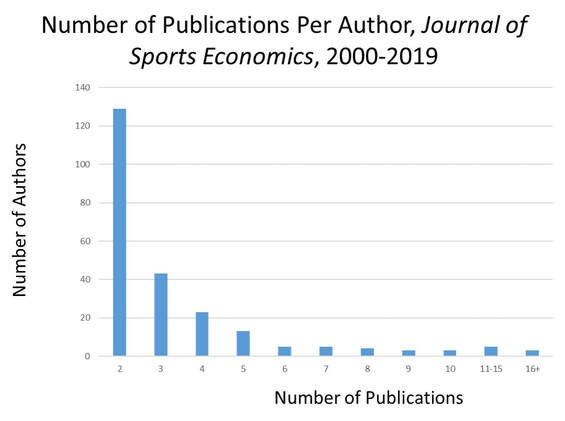
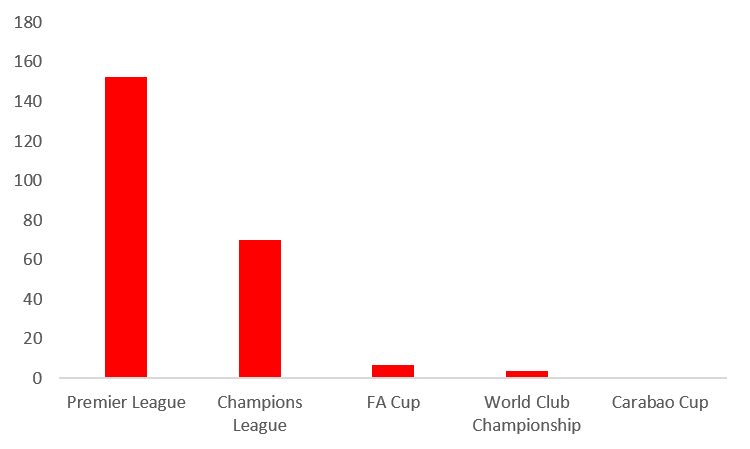
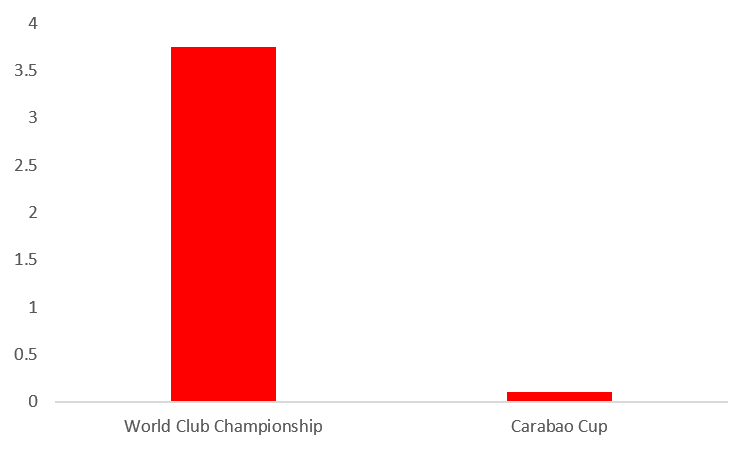
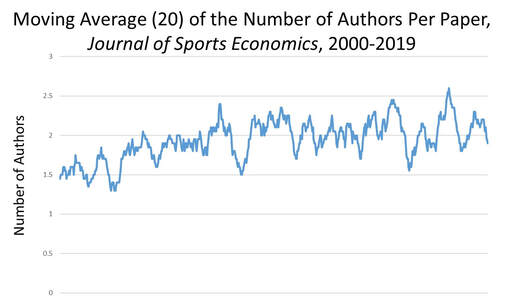
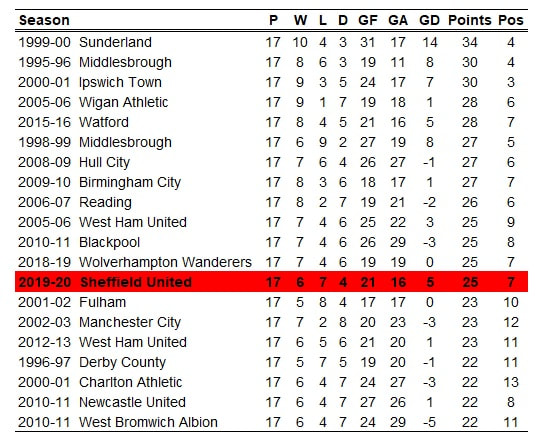
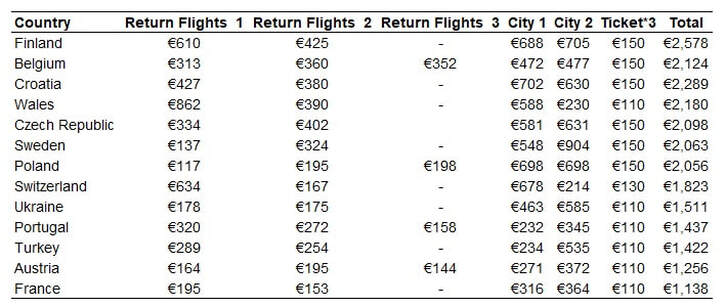
 RSS Feed
RSS Feed